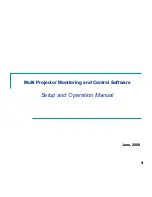
UNIX, Linux, and Mac OS X Client Agent Configuration
Chapter 3: Adding and Configuring the Client Agents 45
Snapshot and Direct I/O Support for UNIX
UNIX client agents support the Snapshot and Direct I/O features. To take
advantage of these features, one of the following environments must exist on
the machine running the UNIX client agent:
Feature
Platform
Software Requirements
Snapshot
Solaris
UFS file system with the fssnap package
installed (Solaris 8 and 9) or the advanced
version of VxFS file system.
Snapshot
HP-UX 11.0
Advanced version of VxFS file system or
Online Journaling File System (JFS).
Direct I/O
Solaris
UFS file system or VxFS file system.
Direct I/O
HP-UX 11.0
Advanced version of VxFS file system or
Online JFS.
Snapshot and Direct I/O Descriptions
With Direct I/O, the client agent takes a snapshot on advanced versions of VxFS,
Online JFS (HP-UX), and UFS with fssnap installed on Solaris. The client agent
mounts the snapshot to a temporary directory created in the root volume, and
then generates the snapshot backup. After the snapshot backup is complete, the
client agent dismounts from the temporary directory and deletes the snapshot.
To perform a snapshot backup, you must specify a snapshot buffer. A snapshot
buffer is the disk space used to store the original data before it is overwritten in
the snapped volume. Remember these considerations when using the snapshot
buffer:
■
The snapshot buffer needs to be large enough to store all the data that
changes in the snapped volume for the duration of the backup. If the
snapshot buffer runs out of space, the snapshot becomes invalid and the
backup fails.
■
The snapped volume and the snapshot buffer should not be on the same file
system.
■
For better performance, the snapped volume and the snapshot buffer should
be on separate physical disks.
■
For UFS on the Solaris platform (using fssnap), the snapshot buffer can be a
file name, a directory name, or a raw partition.
















































